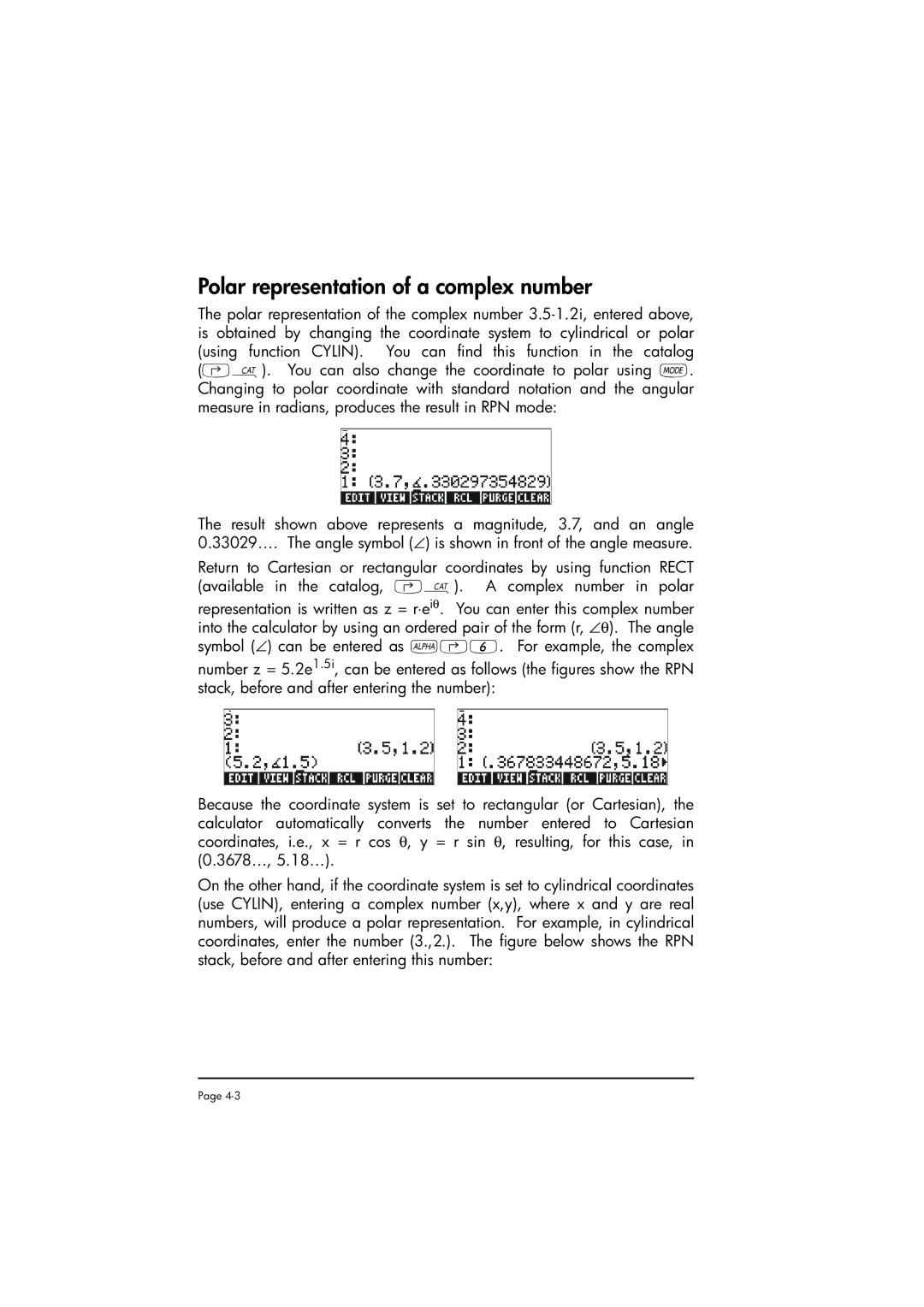
Polar representation of a complex number
The polar representation of the complex number
The result shown above represents a magnitude, 3.7, and an angle 0.33029…. The angle symbol (∠) is shown in front of the angle measure.
Return to Cartesian or rectangular coordinates by using function RECT (available in the catalog, ‚N). A complex number in polar
representation is written as z = r⋅eiθ. You can enter this complex number into the calculator by using an ordered pair of the form (r, ∠θ). The angle symbol (∠) can be entered as ~‚6. For example, the complex number z = 5.2e1.5i, can be entered as follows (the figures show the RPN stack, before and after entering the number):
Because the coordinate system is set to rectangular (or Cartesian), the calculator automatically converts the number entered to Cartesian coordinates, i.e., x = r cos θ, y = r sin θ, resulting, for this case, in (0.3678…, 5.18…).
On the other hand, if the coordinate system is set to cylindrical coordinates (use CYLIN), entering a complex number (x,y), where x and y are real numbers, will produce a polar representation. For example, in cylindrical coordinates, enter the number (3.,2.). The figure below shows the RPN stack, before and after entering this number:
Page
